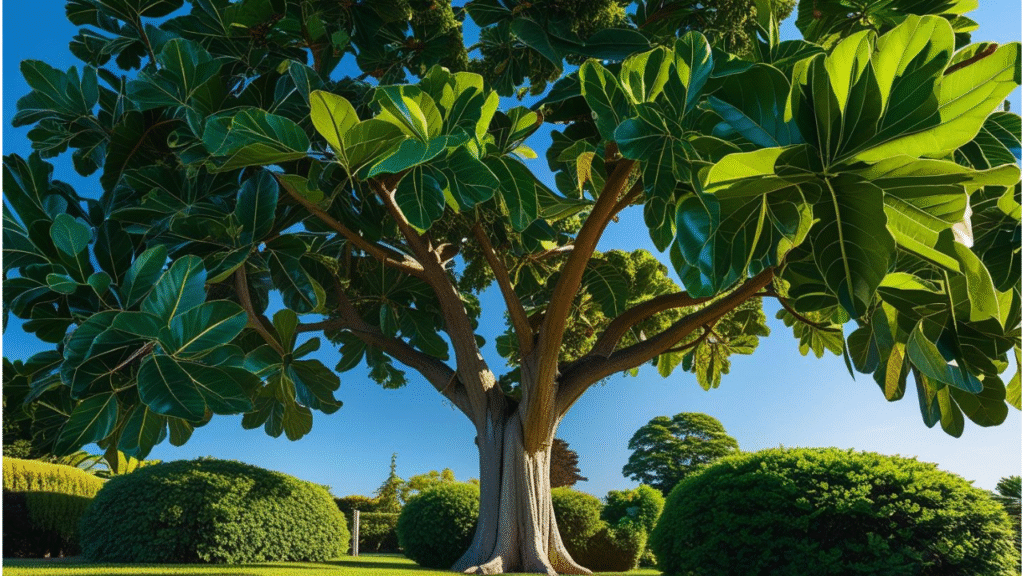
How to Identify and Care for Pecan Nut Tree Leaves: Essential Tips for Healthy Trees
Are your pecan nut tree leaves showing signs of distress? 🍂 Whether you’re a seasoned gardener or a first-time tree owner, the health of your pecan nut tree leaves plays a crucial role in its overall well-being and nut production. But here’s the thing—identifying the subtle signs of leaf stress and knowing how to care for them can be tricky. 🤔
In this article, we’ll show you how to spot healthy vs. unhealthy pecan nut tree leaves and provide practical, actionable tips for keeping your tree vibrant and thriving. From common diseases to environmental stressors, understanding what’s happening with your tree’s leaves is the first step toward nurturing a healthy, productive tree. 🌳
By the end of this guide, you’ll be equipped with the knowledge to care for your pecan tree like a pro, ensuring your tree flourishes for years to come. So, let’s dive in and unlock the secrets to healthy pecan nut tree leaves!
Table of Contents
Toggle🌿 Understanding Pecan Nut Tree Leaves 🌿
Before diving into how to care for your pecan nut tree leaves, it’s important to understand what makes them unique and essential for your tree’s health. 🌳 Pecan nut tree leaves are more than just a pretty sight—they play a vital role in the tree’s survival and productivity. 🌱 Let’s break it down! 🌳
🌱 What Are Pecan Nut Tree Leaves? 🌱
Pecan nut tree leaves are compound leaves, meaning they are made up of multiple leaflets arranged along a central stem. 🌿 This unique structure gives the leaves a long, elegant appearance. 🍃 The leaves typically have a dark green color, though they may change in fall, turning yellow, red, or even brown. 🍂
These leaves are crucial for photosynthesis, the process by which the tree converts sunlight into energy. 🌞 Healthy leaves help the tree grow strong, produce nuts, and fight off diseases. 🌳 Without healthy leaves, your pecan tree won’t thrive. 🍃
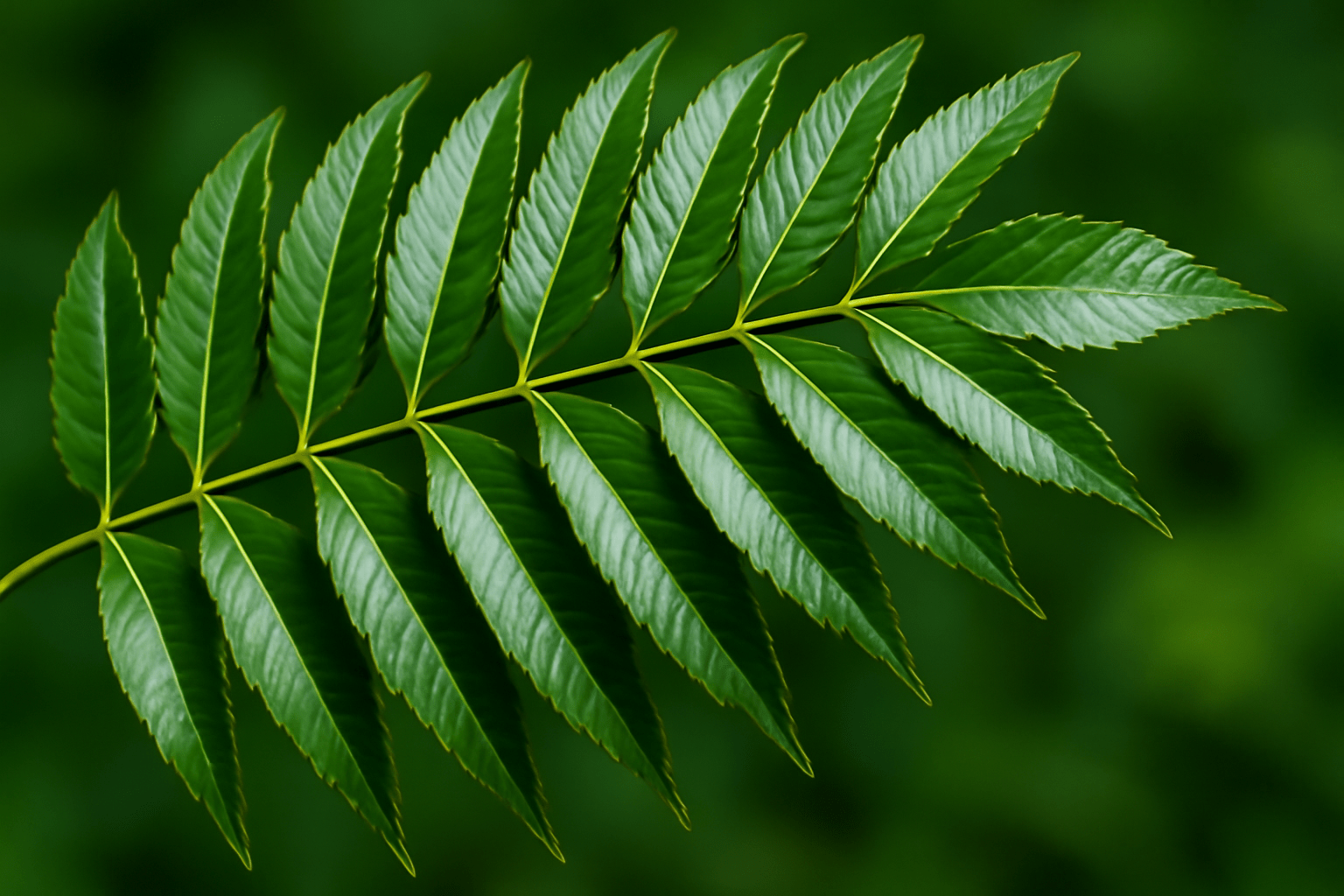
🍂 Anatomy of a Pecan Leaf 🍂
To recognize healthy leaves and spot potential problems, you need to know what to look for. 🌱 Here’s a simple breakdown: 🌿
- Leaflets: Pecan leaves have between 13-17 leaflets, arranged in a feather-like pattern. 🌳
- Shape: They are long, lance-shaped, and have serrated edges (small teeth along the sides). 🌱
- Size: Pecan leaves are fairly large—each one can grow up to 12 inches long! 🌿
- Texture: Healthy pecan leaves are smooth and glossy, giving them a shiny appearance when healthy. 🌱
By understanding these key features, you’ll be able to quickly tell if your tree’s leaves are looking their best. 🌿
🌞 Why Pecan Leaves Matter 🌞
The health of your pecan nut tree leaves directly impacts the tree’s overall well-being. 🌳 Healthy leaves = a happy tree! 🌿
- Energy Production: Pecan leaves capture sunlight and turn it into food for the tree through photosynthesis. 🌞
- Growth: The more vibrant and healthy the leaves, the more energy your tree has to grow strong and produce nuts. 🌰
- Disease Resistance: Well-nourished leaves are less likely to fall victim to pests and diseases. 🌿
In short, keeping your pecan leaves in top shape ensures your tree stays healthy, strong, and productive. 🌳
Now that you understand the importance of pecan nut tree leaves and what to look for, you’re ready to identify any problems and take action. 🌱 Stay tuned as we dive into how to identify healthy vs. unhealthy leaves in the next section! 😊
🍃 How to Identify Healthy Pecan Nut Tree Leaves 🍃
A healthy pecan nut tree starts with vibrant, well-maintained leaves. 🌱 Understanding how to spot healthy pecan nut tree leaves will help you keep your tree in top shape and produce more nuts. 🌳 Let’s explore the key signs of a healthy leaf and how to differentiate it from one that may be struggling. 🌿
🌟 What Healthy Pecan Nut Tree Leaves Look Like 🌟
Healthy leaves are your tree’s sign that it’s thriving! 🌱 Here’s what to look for: 🌿
- Color: Healthy pecan leaves are a rich, dark green throughout the growing season. 🌳 This indicates that your tree is photosynthesizing effectively and receiving the nutrients it needs. 🌞
- Size and Shape: Pecan leaves should be long (up to 12 inches) and lance-shaped, with smooth edges. 🌱 They should not appear stunted or distorted. 🌿
- Glossy Texture: Healthy leaves are smooth and have a shiny, glossy appearance. ✨ This glossy finish is due to the cuticle layer, which protects the leaves from excessive moisture loss. 🌱
- Symmetry: Each leaf should be symmetrical, with evenly spaced leaflets. 🌳 Any irregularity may signal stress or disease. 🌿
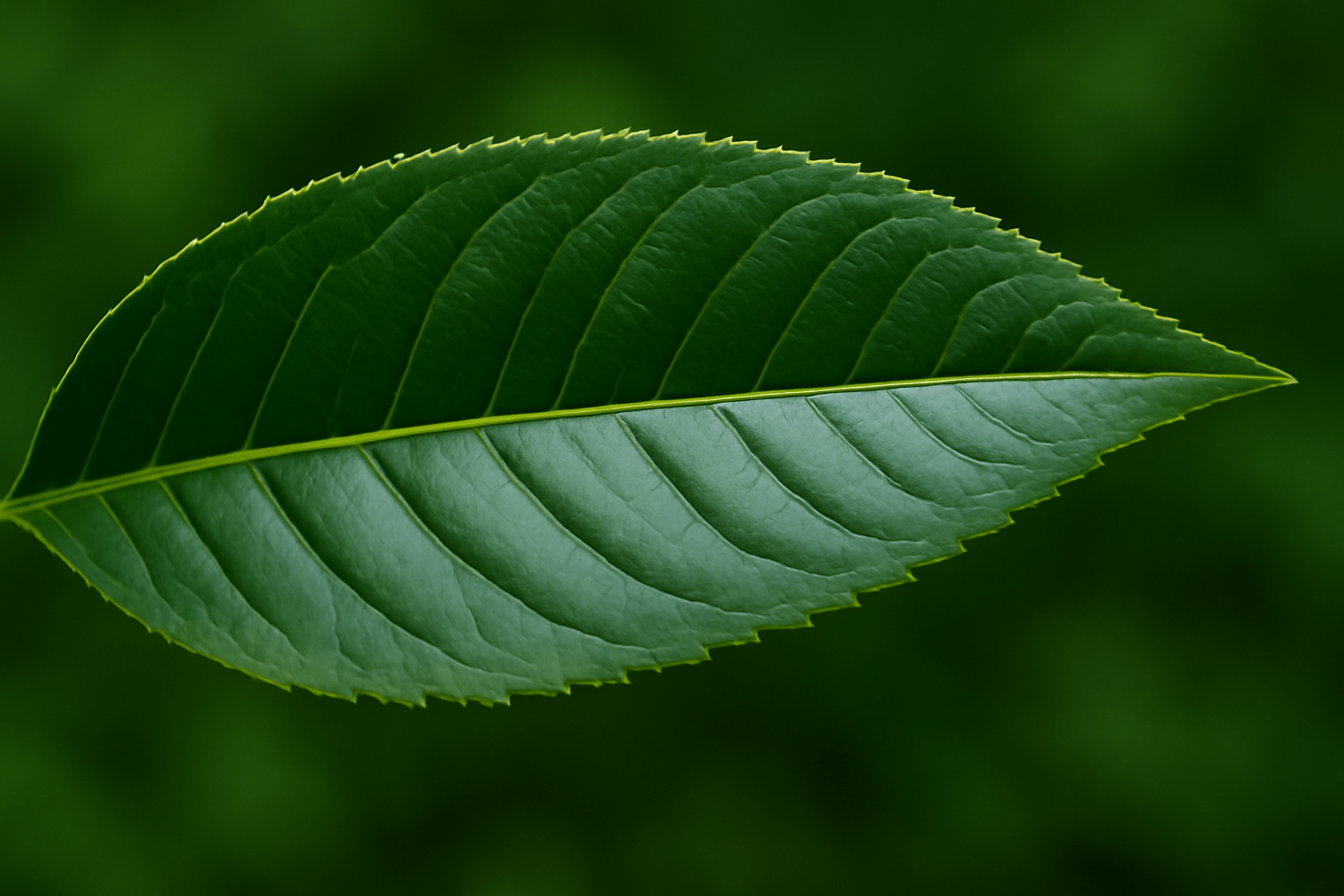
🍃 The Ideal Leaf Arrangement 🍃
A healthy pecan tree will have its leaves arranged alternately along the branches, with no crowding or overlapping. 🌿 The leaves should look well-spaced, which allows for good air circulation and helps the tree fight off fungal diseases. 🍃
🍂 What to Avoid in Healthy Leaves 🍂
Here are a few things you won’t find on healthy pecan nut tree leaves: 🌱
- Brown edges or tips: These can be a sign of water stress or pest damage. 🌿
- Yellowing between veins (chlorosis): This might indicate a nutrient deficiency, like lack of nitrogen or iron. 🌱
- Discoloration or blotchy spots: Pecan leaves should have a uniform color with no brown spots, which often indicate fungal or bacterial infections. 🌳
If your pecan tree’s leaves check all the boxes—vibrant color, glossy texture, proper size, and symmetry—you’re on the right track to a healthy tree. 🌳
🍃 A Quick Visual Checklist 🍃
Use this simple checklist to help you quickly assess the health of your tree’s leaves: 🌿
- ✅ Dark green color 🌱
- ✅ Smooth, glossy texture ✨
- ✅ Full, symmetrical leaflets 🌿
- ✅ No discoloration or spots 🍃
- ✅ Proper leaf arrangement on branches 🌳
🌞 Why Identifying Healthy Leaves Matters 🌞
When your pecan nut tree leaves are healthy, the entire tree benefits. 🌿 Healthy leaves are essential for maximizing photosynthesis, supporting strong root development, and ensuring that your tree can resist pests and diseases. 🌰
Now that you know what healthy leaves look like, you’re ready to recognize when something’s wrong! 🌳 In the next section, we’ll cover common problems that can affect your tree’s leaves and how to spot them early. Stay tuned! 😊
🍂 Common Problems with Pecan Nut Tree Leaves 🍂
Even with the best care, pecan nut tree leaves can sometimes show signs of stress or damage. 🌱 Knowing how to identify these common issues early is essential to maintaining the health of your tree. 🌳 In this section, we’ll explore the most common problems that can affect pecan nut tree leaves and provide you with actionable tips on how to address them. 🌿
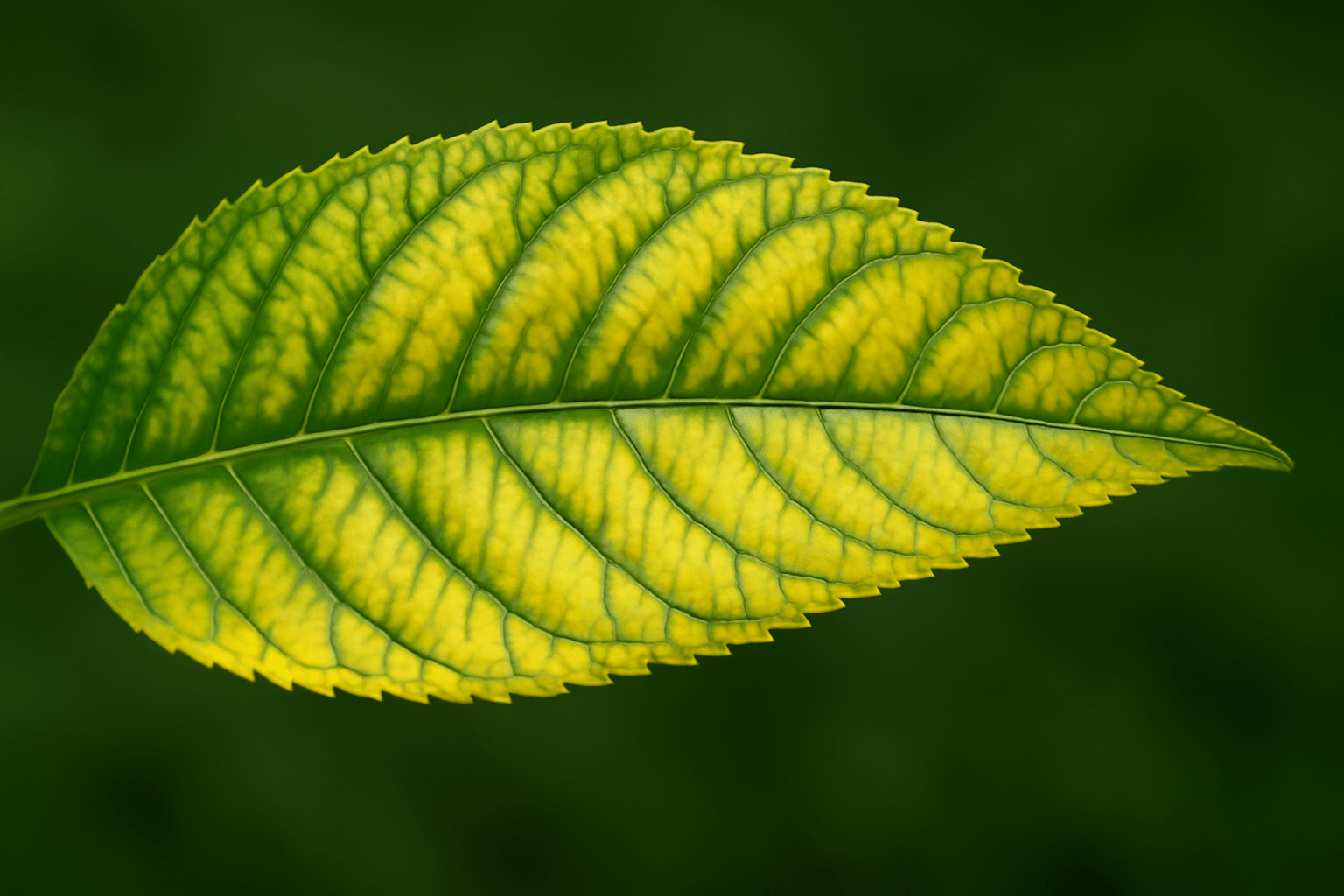
🦠 1. Pecan Leaf Diseases and Infections 🦠
- Leaf Spot Disease
Leaf spot diseases are among the most common issues for pecan trees. 🌿 These fungal infections appear as small, round spots on the leaves, often turning yellow, brown, or black. 🌱 As the disease progresses, the leaves may drop prematurely, weakening the tree and reducing nut production. 🌳
- How to Spot It: Look for circular spots on the leaves, often with dark edges and a lighter center. 🌿
- How to Fix It:
- Remove infected leaves from the tree and the ground. 🌱
- Apply a fungicide designed for pecan trees to prevent further spread. 🍃
- Ensure proper air circulation around the tree by pruning overlapping branches. 🌳
- Powdery Mildew
Powdery mildew is a white, powdery fungus that typically appears on the upper sides of leaves. 🍃 It thrives in warm, humid conditions and can stunt the growth of leaves, affecting photosynthesis. 🌞
- How to Spot It: White, dusty spots on the leaves, especially on younger leaves. 🌿
- How to Fix It:
- Prune any affected branches to improve airflow. 🌱
- Apply a fungicide or use a natural remedy like neem oil to treat the infection. 🌿
- Avoid overhead watering to keep the leaves dry. 💧
🐛 2. Pecan Nut Casebearer (Pest Damage) 🐛
The pecan nut casebearer is a common pest that targets pecan trees, especially during the growing season. 🌱 While they primarily affect the nuts, the larvae can also cause damage to the leaves. 🌿
- How to Spot It: You may notice small holes or chewed edges on the leaves, or see larvae feeding on young buds. 🌱
- How to Fix It:
- Apply insecticidal soap or a biological control like Bacillus thuringiensis (Bt). 🧴
- Set up pest traps in your garden to capture and monitor adult pests. 🍃
💧 3. Environmental Stress and Watering Issues 💧
- Overwatering or Underwatering
Both overwatering and underwatering can cause severe stress to pecan trees, leading to unhealthy leaves. 🌿
- How to Spot It:
- Overwatering: Yellowing leaves, wilting, and a soft, mushy root system. 💧
- Underwatering: Dry, curled, or crispy leaves. 🌞
- How to Fix It:
- Ensure the tree is receiving deep, infrequent watering (about once a week). 💦
- Improve drainage in the soil to prevent water from collecting around the roots. 🍂
- Heat Stress or Sunburn
Pecan trees can suffer from sunburn or heat stress, especially during hot summers. 🌞 Leaves may become scorched, with brown or blackened edges. 🌱
- How to Spot It: Brown or white spots on the leaves, typically along the edges. 🌿
- How to Fix It:
- Provide some shade during the hottest part of the day using shade cloth or planting companion plants nearby. 🌱
- Ensure consistent watering to help the tree cope with heat. 💧
🌱 4. Nutrient Deficiencies 🌱
- Nitrogen Deficiency
Nitrogen is crucial for healthy leaf growth, and a lack of it can cause yellowing between the veins of the leaves (chlorosis). 🌿
- How to Spot It: Yellowing leaves, especially on older branches, with green veins remaining. 🌱
- How to Fix It:
- Apply a balanced fertilizer with a high nitrogen content. 🌿
- Consider adding organic matter like compost to improve soil nutrient levels. 🍃
- Iron Deficiency (Iron Chlorosis)
Iron deficiency can cause the leaves to turn yellow, especially between the veins, while the veins themselves remain green. 🌿
- How to Spot It: Yellowing leaves with green veins, often starting at the tips. 🌱
- How to Fix It:
- Apply chelated iron to the soil or use a foliar spray of iron. 🌱
- Ensure your soil pH is in the right range (6.0–6.5) for optimal nutrient absorption. 💧
🌞 5. Sunscald and Frost Damage 🌞
While sunburn happens in summer, sunscald or frost damage typically occurs during the colder months. 🌨️ When temperatures fluctuate rapidly, the tree’s leaves may suffer from extreme weather changes. 🌿
- How to Spot It: Leaves will have brown or black patches that appear damaged by extreme cold or intense heat. 🌞
- How to Fix It:
- During the winter months, wrap the tree with burlap or provide a protective covering to shield the leaves from harsh conditions. 🌨️
- Avoid sudden temperature changes if the tree is inside a greenhouse or in a container. 🏡
🌿 Preventing Problems Before They Start 🌿
- Proper Watering: Ensure you’re watering correctly—deep, consistent watering without flooding. 💦
- Fertilization: Regularly fertilize your tree to prevent nutrient deficiencies. 🌱
- Pest Monitoring: Stay on top of pest control by regularly inspecting your tree. 🐞
By knowing how to spot these common problems early and take corrective action, you’ll keep your pecan nut tree leaves healthy and ensure the tree thrives throughout the year. 🌳 In the next section, we’ll guide you through effective care tips to keep your leaves in top shape! 😊
🌿 How to Care for Pecan Nut Tree Leaves 🌿
Taking good care of your pecan nut tree leaves is essential for maintaining the health and vitality of your tree. 🌱 Proper care helps prevent common leaf issues and encourages robust growth. 🌿 In this section, we’ll walk you through the best practices for keeping your pecan leaves lush and healthy throughout the year. 🌱
💧 1. Proper Watering Techniques 💧
Watering your pecan tree correctly is one of the most important factors in keeping your leaves healthy. 🌿 Both overwatering and underwatering can stress the tree and cause leaf problems. 🍃
How to Water Properly:
- Pecan trees need deep watering to encourage root growth. 🌳 Water deeply once a week, especially during dry periods. 💧
- Check soil moisture by digging a few inches into the soil. 🌱 If it’s dry, it’s time to water. 🌿
- Avoid overhead watering that can encourage fungal diseases. 🌞 Water at the base of the tree and focus on the roots. 🍃
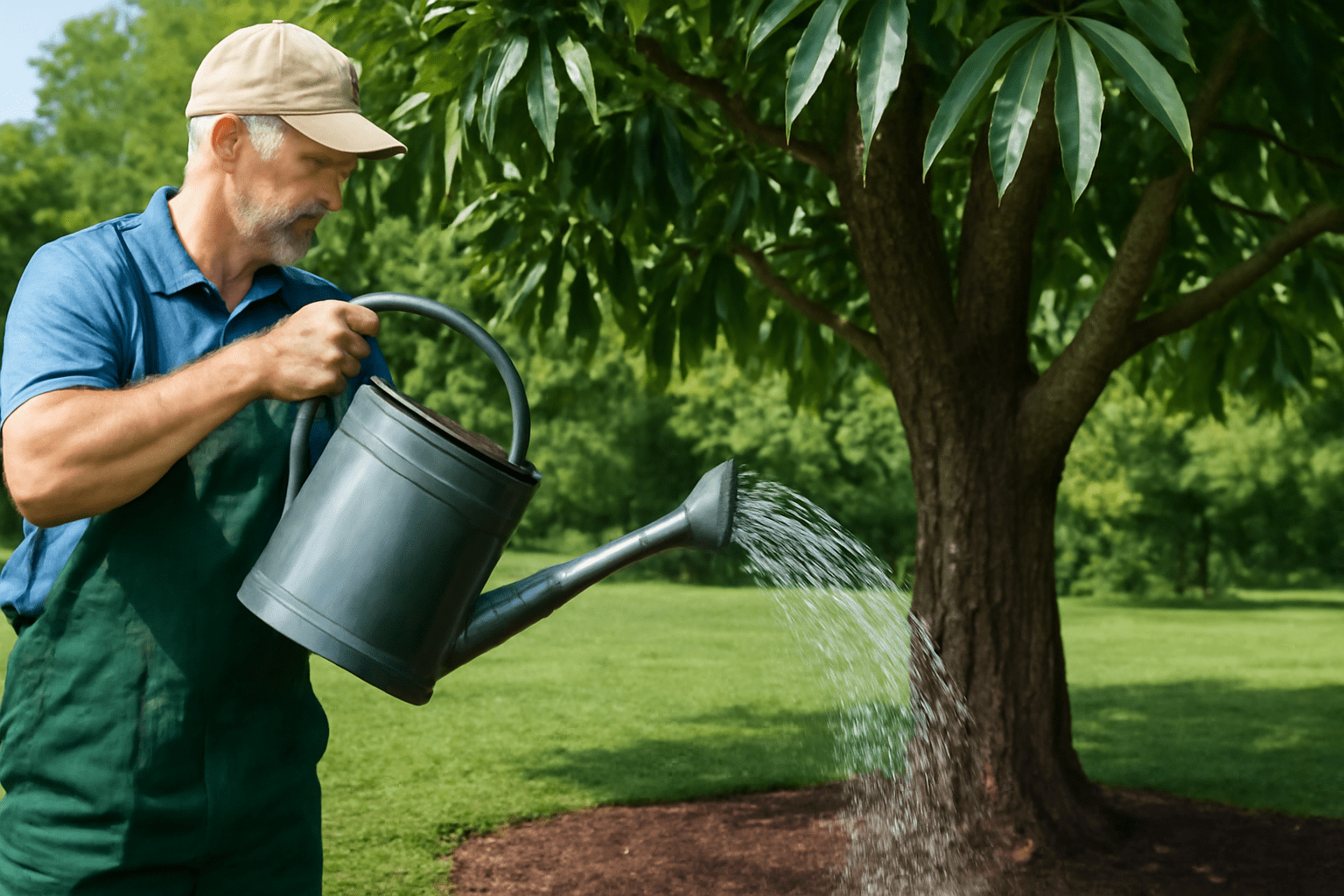
Signs of Overwatering:
- Yellowing leaves and a soggy root system. 🌿
- Root rot can develop in overly wet soil, damaging the leaves and tree overall. 🌱
Signs of Underwatering:
- Wilting leaves that curl or crisp at the edges. 🌞
- Drought stress can stunt leaf growth and result in smaller, weaker leaves. 🍂
🌱 2. Nutrient Management 🌱
A healthy pecan tree requires the right balance of nutrients to keep its leaves vibrant. 🌱 Without proper nutrients, your tree’s leaves may yellow, drop prematurely, or become weak and vulnerable to pests. 🍃
Fertilizing Tips:
- Apply a balanced fertilizer that contains nitrogen, phosphorus, and potassium. 🌿 Nitrogen is especially important for healthy leaf growth. 🌱
When to Fertilize:
- Fertilize your pecan tree in early spring before new growth begins, and again in late summer to prepare for the next season. 🌱
- Slow-release fertilizers work well because they provide a steady stream of nutrients to the tree. 🍂
Soil Testing:
- Consider getting a soil test to determine if your soil is lacking in specific nutrients like iron or nitrogen. 🧑🌾
- Adjust fertilization based on the results, as certain deficiencies can affect leaf color and health. 🍃
✂️ 3. Pruning and Trimming ✂️
Pruning isn’t just about shaping your tree—it also plays a crucial role in maintaining healthy leaves. 🌿 Proper pruning improves air circulation, reduces disease risk, and helps the tree direct its energy toward growing strong leaves. 🌳
When to Prune:
- The best time to prune pecan trees is during late winter or early spring before new growth begins. 🌱 This prevents stressing the tree during its active growing season. 🌿
- Remove any dead or diseased branches to prevent the spread of pests or diseases to healthy leaves. 🌸
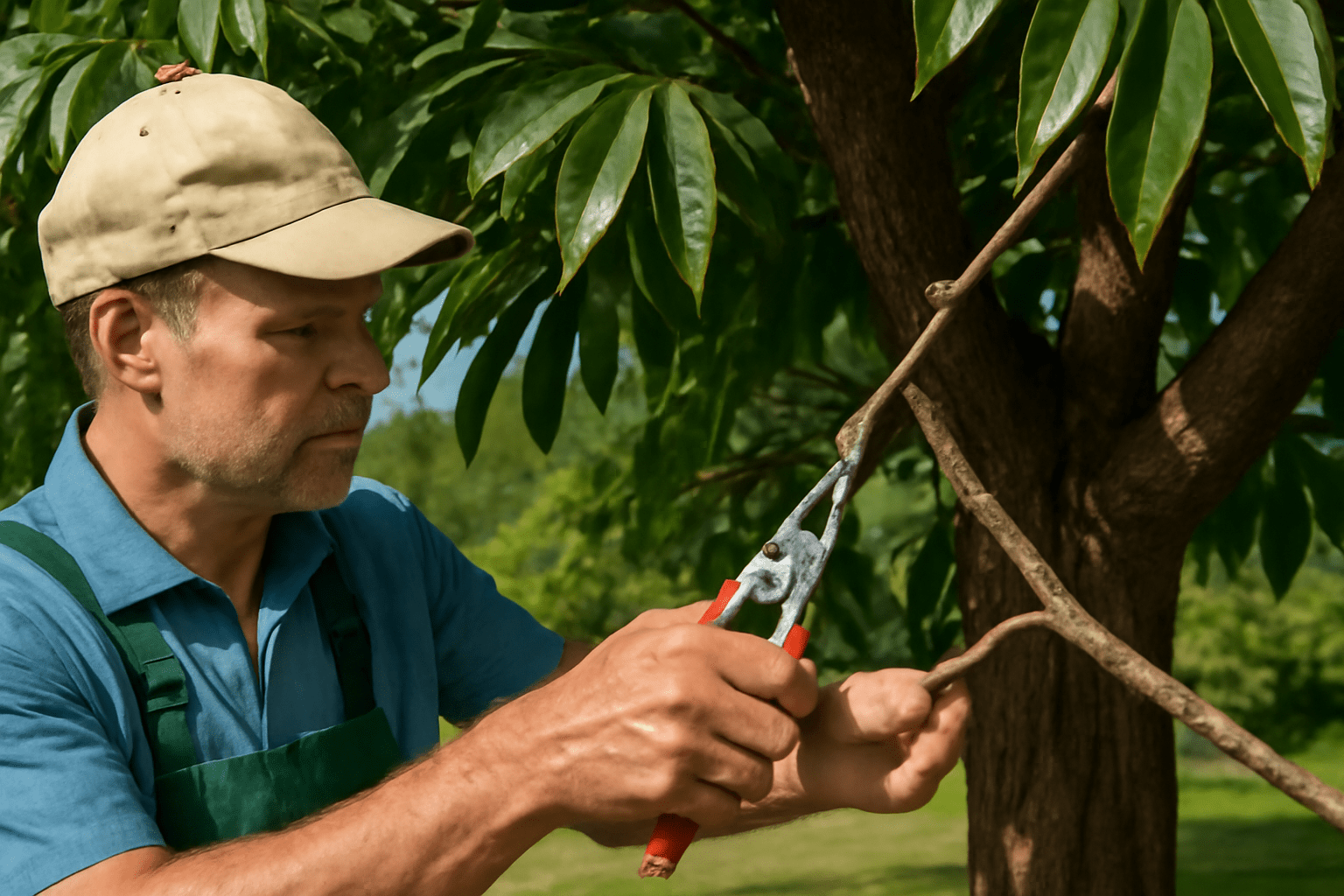
How Pruning Helps Leaves:
- Pruning allows more sunlight to reach the lower branches, which encourages strong leaf growth. 🌞
- It also removes competing growth, allowing the tree to focus its energy on maintaining healthy leaves and producing nuts. 🌰
🌿 4. Pest and Disease Control 🌿
Protecting your pecan tree from pests and diseases is key to maintaining healthy leaves. 🍃 Pests like aphids, caterpillars, and scale insects can damage your tree’s leaves, while diseases such as powdery mildew can hinder photosynthesis. 🌱
How to Control Pests:
- Insecticidal Soap: Use organic insecticidal soap to treat common pests like aphids and caterpillars. 🌱
- Natural Predators: Encourage beneficial insects like ladybugs and lacewings to naturally control pest populations. 🌸
- Sticky Traps: Use traps to catch and monitor pests like the pecan nut casebearer. 🌿
Preventing Disease:
- Good Air Circulation: Keep your tree well-pruned to avoid dense foliage, which can trap moisture and encourage fungal growth. 🍂
- Fungicides: If necessary, apply a fungicide to prevent fungal diseases like leaf spot or powdery mildew. 🌱 Be sure to follow all label instructions for safe use. 🧴
☀️ 5. Environmental Adjustments ☀️
Your pecan tree’s environment plays a significant role in leaf health. 🌳 By creating the right conditions, you can help your tree thrive and prevent environmental stress. 🌞
Temperature and Sun Protection:
- Pecan trees prefer full sun but can suffer from sunburn during extreme heat. 🌞 Provide shade during the hottest part of the day, especially if your tree is young. 🌱
- In colder climates, protect the tree from winter frost by covering it with burlap or frost blankets during freezing weather. ❄️
Soil Health:
- Well-drained soil is essential for pecan trees. 🌿 Ensure your soil has good drainage and is not too compacted. 🌱
- If the soil is too acidic, consider adding lime to raise the pH to a more neutral level, which helps the tree absorb nutrients better. 🍂
🧑🌾 6. Mulching Around the Tree 🧑🌾
Mulch is a simple but effective way to care for your pecan tree leaves and tree overall. 🌿 It helps maintain soil moisture, regulates temperature, and keeps weeds at bay. 🌱
How to Apply Mulch:
- Spread a 2–3 inch layer of mulch around the base of the tree, making sure it doesn’t touch the trunk. 🍂
- Mulch made from organic materials, like wood chips or compost, will slowly decompose and add nutrients to the soil over time. 🌱
By following these care tips, you’ll create a healthier environment for your pecan tree and promote strong, vibrant leaves that can withstand pests, diseases, and environmental stress. 🌿 In the next section, we’ll cover seasonal care tips for pecan trees, so you can keep your tree thriving all year long! 🌳😊
🌳 Seasonal Care Tips for Pecan Nut Tree Leaves 🌳
Pecan nut trees require different care throughout the year, depending on the season. 🌱 Understanding how to adjust your care routine for each season will ensure your pecan leaves remain healthy and your tree thrives. 🌿 In this section, we’ll explore essential seasonal care tips to help you keep your pecan nut tree in top shape all year round. 🍃
🌷 Spring Care Tips: Kickstart the Growing Season 🌷
Spring is a time of new growth, and it’s crucial to give your pecan tree the attention it needs to flourish during this period. 🌱 Here’s how to prepare: 🌿
- Inspect for Pests and Diseases:
Early spring is the perfect time to check for pests like aphids or diseases such as leaf spot. 🍂 Remove any infected or damaged leaves to prevent further spread. 🍃 - Fertilize Your Tree:
Apply a balanced fertilizer to promote new leaf growth. 🌳 Look for a fertilizer with a high nitrogen content to help your tree produce strong, healthy leaves. 🍃 - Prune Dead or Diseased Branches:
Remove any dead, damaged, or diseased branches before the new growth starts. 🌱 This allows the tree to direct its energy toward healthy branches and leaves. 🌿 - Watering:
Ensure your pecan tree is adequately watered as temperatures rise and the tree starts to actively grow. 💧 Water deeply, but avoid overwatering, as it can lead to root rot. 🌳
☀️ Summer Care Tips: Protect and Hydrate ☀️
Summer brings heat and intense sunlight, so your pecan tree needs extra care to avoid stress and keep its leaves healthy. 🌞
- Prevent Heat Stress:
During the hottest part of the day, provide partial shade to prevent your tree’s leaves from sunburn. 🌿 Use a shade cloth or plant companion plants to shield your tree. 🌱 - Check for Watering Needs:
Hot temperatures increase water evaporation, so ensure your tree gets deep, consistent watering. 💧 Water early in the morning or later in the evening to reduce evaporation loss. 🌳 - Maintain Soil Moisture:
Use mulch around the base of your tree to retain moisture and keep the soil cool. 🌿 A 2-3 inch layer of mulch will also help protect the tree’s roots from extreme heat. 🌱 - Monitor for Pests and Diseases:
Keep an eye out for pests like the pecan nut casebearer and diseases that thrive in hot, humid conditions. 🌱 Apply insecticides or fungicides if necessary, following the manufacturer’s guidelines. 🧴
🍂 Fall Care Tips: Prepare for Dormancy 🍂
As the weather cools, it’s important to start preparing your pecan tree for the winter months. 🍃 Fall care is about protecting your tree and setting it up for a healthy dormancy period. 🌱
- Prune to Shape and Remove Diseased Growth:
Fall is a good time to do light pruning—remove any dead, weak, or diseased branches to allow air to circulate around the tree. 🍂 - Don’t prune too aggressively, as this can encourage new growth that could be vulnerable to frost damage. ❄️
- Watering Adjustments:
Reduce watering as the weather cools, but make sure the soil is still moist enough to prevent dehydration before winter dormancy sets in. 🌱 - Fertilize Before Dormancy:
Apply a slow-release fertilizer that helps the tree store nutrients for the colder months. 🌳 Choose one with a higher potassium and phosphorus content to encourage strong root growth and improve winter resilience. 🌿 - Check for Falling Leaves:
Rake up fallen leaves and dispose of them properly. 🍂 If leaves are diseased, it’s especially important to remove them to prevent spreading infections during the winter. 🌱
❄️ Winter Care Tips: Protect During Cold Months ❄️
Winter is the season of rest for pecan trees, but they still need protection from cold temperatures and extreme weather. 🌨️ Here’s how to protect your tree’s leaves and health during the colder months: 🌱
- Cover the Tree During Extreme Cold:
If your area experiences harsh winters, consider using burlap or frost blankets to protect your tree from frost damage. 🌳 Wrap the trunk and lower branches to keep the tree from freezing. ❄️ - Avoid Overwatering:
During winter dormancy, reduce watering to avoid waterlogged soil. 💧 Check the soil to make sure it isn’t too dry or too wet. 🌱 - Maintain Mulch Layers:
Keep the mulch around the base of the tree to insulate the roots. 🍂 Ensure the mulch is not piled directly against the trunk to prevent moisture buildup and rot. 🌱 - Monitor for Winter Sunscald:
On sunny winter days, the sudden temperature changes can cause sunscald on your tree’s leaves. 🌞 Providing some temporary shading or wrapping the tree can help prevent this.

🌟 Seasonal Care Summary: Keep Your Pecan Tree Thriving Year-Round 🌟
By adjusting your care routine according to the seasons, you’ll give your pecan tree the best chance for healthy, thriving leaves and successful nut production. 🌳 Here’s a quick recap of the seasonal care tips: 🌿
- Spring: Inspect for pests, fertilize, and prune dead growth. 🌸
- Summer: Protect from heat stress, ensure proper watering, and monitor for pests. 🌞
- Fall: Prune lightly, water carefully, and prepare for dormancy. 🍂
- Winter: Protect from cold weather, reduce watering, and insulate with mulch. ❄️
Following these seasonal guidelines will help you nurture your pecan tree and maintain healthy, vibrant leaves throughout the year. 🌱 Stay tuned as we dive into troubleshooting common leaf problems in the next section! 🌳😊
🍂 Troubleshooting Common Leaf Problems 🍂
Even with the best care, pecan nut tree leaves can sometimes experience issues. 🌱 By identifying problems early, you can take action to keep your tree healthy and ensure that it continues to thrive. 🌳 In this section, we’ll address some of the most common leaf problems and provide solutions to help you troubleshoot effectively. 🌱
🟡 1. Yellowing Leaves (Chlorosis) 🟡
Yellowing leaves are a common issue that can be caused by a number of factors. 🌱 When you notice your pecan tree leaves turning yellow, it’s a sign that something is wrong. 🌿
Possible Causes:
- Nutrient Deficiency: A nitrogen deficiency is the most common cause of yellowing leaves, but it can also indicate a lack of iron or magnesium. 🍃
- Water Stress: Both overwatering and underwatering can cause yellowing leaves. 💧
- Poor Soil Drainage: If your soil doesn’t drain well, the roots can become waterlogged, leading to chlorosis. 🌿
How to Fix It:
- Fertilize your tree with a balanced fertilizer high in nitrogen. 🌱 If the problem is related to iron or magnesium, consider adding chelated iron or Epsom salts. 🌱
- Ensure proper watering habits. 💧 Water your tree deeply but allow the soil to dry out between waterings to prevent root rot. 🍃
- Improve soil drainage by adding organic matter or sand to loosen compacted soil. 🌿
🍂 2. Brown Spots or Leaf Blotch 🍂
If you see brown spots or irregular blotches on your pecan leaves, it could be a sign of a fungal infection or bacterial disease. 🌿 These problems typically appear during the growing season when the weather is warm and moist. 🌱
Possible Causes:
- Leaf Spot Disease: Fungal diseases often cause small, dark, circular spots that spread over the leaf surface. 🌿
- Bacterial Infections: Bacteria can also cause water-soaked lesions that turn brown over time. 🌱
- Excess Moisture: High humidity or overwatering can create conditions favorable for fungal growth. 🌿
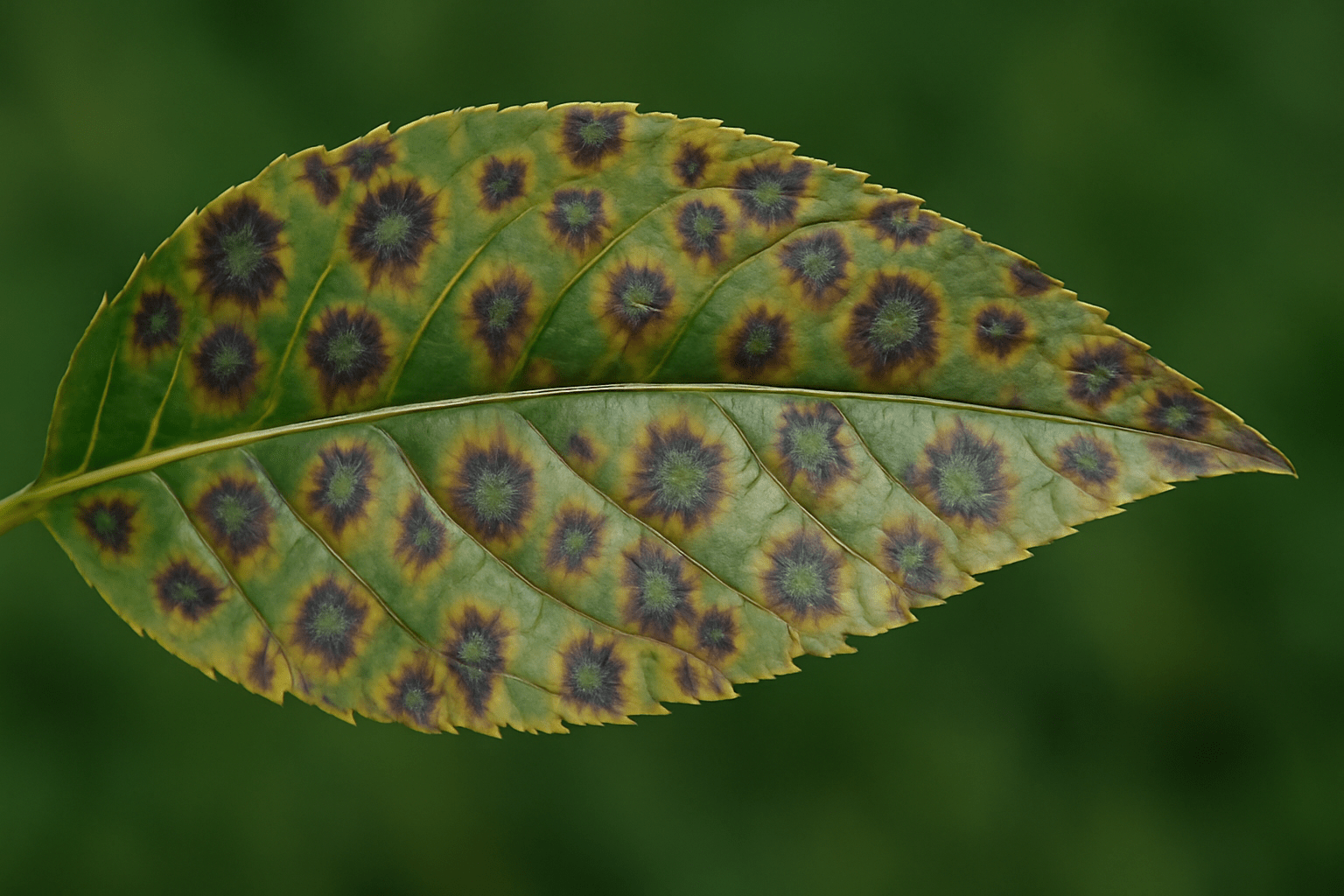
How to Fix It:
- Prune infected leaves and dispose of them properly to prevent the spread of disease. 🍂
- Use a fungicide to treat fungal infections, or apply a bacterial-killing solution if bacterial infection is suspected. 🧴 Always follow product instructions. 🌿
- Improve air circulation around the tree by trimming overcrowded branches and avoiding overhead watering. 🍃
🍂 3. Wilting or Curling Leaves 🍂
When pecan leaves begin to wilt or curl, it could be a sign of environmental stress, pest damage, or a watering issue. 🌱
Possible Causes:
- Underwatering: If the tree doesn’t get enough water, the leaves will begin to wilt and curl as a sign of dehydration. 💧
- Pests: Insects like aphids and spider mites can feed on the tree’s sap, causing the leaves to curl. 🐞
- Heat Stress: High temperatures and direct sunlight can lead to leaf curling as a defense mechanism against dehydration. 🌞
How to Fix It:
- Check watering practices—ensure your tree is getting enough water, but avoid waterlogging. 💧
- Inspect for pests like aphids, spider mites, or caterpillars. 🐛 If pests are present, treat the tree with insecticidal soap or a biological pest control like neem oil. 🧴
- During hot weather, shade the tree from the midday sun to prevent excessive heat stress and water loss. 🌞
🟤 4. Leaf Drop (Premature Leaf Fall) 🟤
If you notice that your pecan tree is losing its leaves prematurely, it can be a sign of stress or disease. 🌱 While some leaf drop is natural in the fall, sudden, early leaf loss can be a warning sign. 🍂
Possible Causes:
- Water Stress: Both overwatering and underwatering can cause the tree to shed leaves early. 💧
- Nutrient Deficiency: A lack of essential nutrients like nitrogen or potassium can result in weak leaves that drop prematurely. 🌱
- Pests or Disease: Pests like the pecan nut casebearer or fungal diseases can cause significant damage, leading to early leaf drop. 🌿
How to Fix It:
- Adjust watering practices to ensure the soil is moist but not waterlogged. 💧
- Fertilize your tree with a balanced fertilizer, focusing on nitrogen to support healthy leaf growth. 🌱
- Inspect for pests and diseases. 🐛 If pests are present, use an appropriate pesticide or insecticidal soap. 🧴 For diseases, apply fungicides as needed. 🍃
🟢 5. Holes in Leaves (Pest Damage) 🟢
Holes in your pecan tree’s leaves can be caused by insects or pests that feed on the foliage. 🐛 It’s important to identify the culprits early to prevent further damage. 🌿
Possible Causes:
- Pecan Nut Casebearer: The larvae of this pest can cause small holes in young leaves as they feed on the buds and leaves. 🌿
- Caterpillars: Various caterpillars can chew through the leaves, leaving holes. 🐛
- Leafminers: These pests burrow into the leaf tissue, causing visible holes. 🌱
How to Fix It:
- Inspect your tree for pests like the pecan nut casebearer or caterpillars. 🐞 Use insecticidal soap or Bacillus thuringiensis (Bt) to target the larvae. 🧴
- Remove any damaged leaves to reduce the number of pests and prevent the spread of damage. 🍂
- Install traps or use organic pest control methods to keep the insect population under control. 🌱
🧑🌾 Troubleshooting Summary: Quick Solutions for Healthy Leaves 🧑🌾
When it comes to caring for your pecan nut tree leaves, early identification and intervention are key. 🌿 Here’s a quick recap of the most common leaf problems and their fixes: 🌱
- Yellowing Leaves (Chlorosis): Check for nutrient deficiencies, water stress, and improve soil drainage. 🌿
- Brown Spots or Leaf Blotch: Prune diseased leaves, apply fungicides, and avoid overhead watering. 🍂
- Wilting or Curling Leaves: Adjust watering, inspect for pests, and provide heat protection. 🌞
- Premature Leaf Drop: Ensure proper watering and nutrients, and check for pests and diseases. 🌿
- Holes in Leaves: Check for pests like caterpillars or the pecan nut casebearer and treat with insecticides. 🐛
By staying vigilant and addressing these problems early, you can ensure that your pecan nut tree remains healthy and strong, producing lush leaves and abundant nuts. 🌳😊
🌟 Resource Links and Further Reading 🌟
To help you continue learning and caring for your pecan nut tree leaves, here are some trusted resources and further reading that can deepen your knowledge and provide more in-depth solutions to any challenges you may face. 🌳 Whether you’re looking for expert advice, research, or community support, these links will guide you on your journey to becoming a pecan tree care expert! 🌱
📚 Trusted Resources for Pecan Tree Care 📚
- University of Georgia Pecan Extension
UGA Pecan Extension
This comprehensive resource provides in-depth guides on pecan tree care, pest management, and disease prevention specifically tailored to different growing regions. 🌱 - Texas A&M AgriLife Extension: Pecan Care
Texas A&M Pecan Care
A trusted resource for understanding the intricacies of pecan tree care, from watering and pruning to pest and disease control, tailored for Texas and other regions. 🌳 - North Carolina State University – Pecan Tree Care
NCSU Pecan Care
Another excellent resource for comprehensive pecan tree management, including troubleshooting common leaf issues, soil health, and seasonal care tips. 🌱 - The Pecan Growers Association
Pecan Growers Association
This nonprofit organization offers useful guides, articles, and tools for pecan tree care. 🌳 Whether you’re a hobbyist or a commercial grower, their resources can help you maintain a healthy tree. 🌿
🌿 Books for Pecan Tree Care 🌿
- “The Pecan Orchard: Tree by Tree, Row by Row” by L. R. Barritt
A detailed guide to managing a pecan orchard, including practical advice on growing and maintaining healthy pecan trees. 🌱 - “Pecan Production Manual” by University of California Agriculture and Natural Resources
This manual covers everything from planting and care to harvesting and pests, with clear guidelines and expert insights. 📚
🌱 Community Support and Forums 🌱
- Pecan Tree Growers Forum
Pecan Tree Forum
A dedicated online forum where pecan growers from around the world share tips, solutions, and success stories. 🌿 Great for asking specific questions and learning from other tree owners. 🌱 - GardenWeb’s Pecan Tree Section
GardenWeb Pecan Care
A helpful section in the GardenWeb community with user-generated discussions on pecan care, troubleshooting, and pest control. 🍃
🧑🌾 Educational Videos and Webinars 🧑🌾
- YouTube – Pecan Tree Care Tutorials
Search for “Pecan Tree Care” on YouTube to find a wide variety of video tutorials on topics like pruning, watering, pest management, and leaf care. 🎥 - Pecan Management Webinars (Texas A&M)
Texas A&M Webinars
Join expert-led webinars that cover the latest research and best practices in pecan care. 🎓 These sessions offer valuable insights and practical tips for growers of all levels. 🌳
🌟 Stay Informed and Keep Growing! 🌟
By utilizing these resources, you’ll have all the information you need to keep your pecan tree thriving year after year. 🌿 Whether you’re troubleshooting leaf problems, learning about new care techniques, or connecting with other tree owners, the right resources will help you become a confident and successful pecan grower. 🌳 Happy gardening! 🌱😊
🌿 Final Thoughts 🌿
Caring for your pecan nut tree leaves is a rewarding yet important task that directly impacts the health and productivity of your tree. 🌱 By understanding the structure, signs of healthy leaves, and common leaf problems, you are well-equipped to take proactive steps in maintaining your tree throughout the year. 🌳
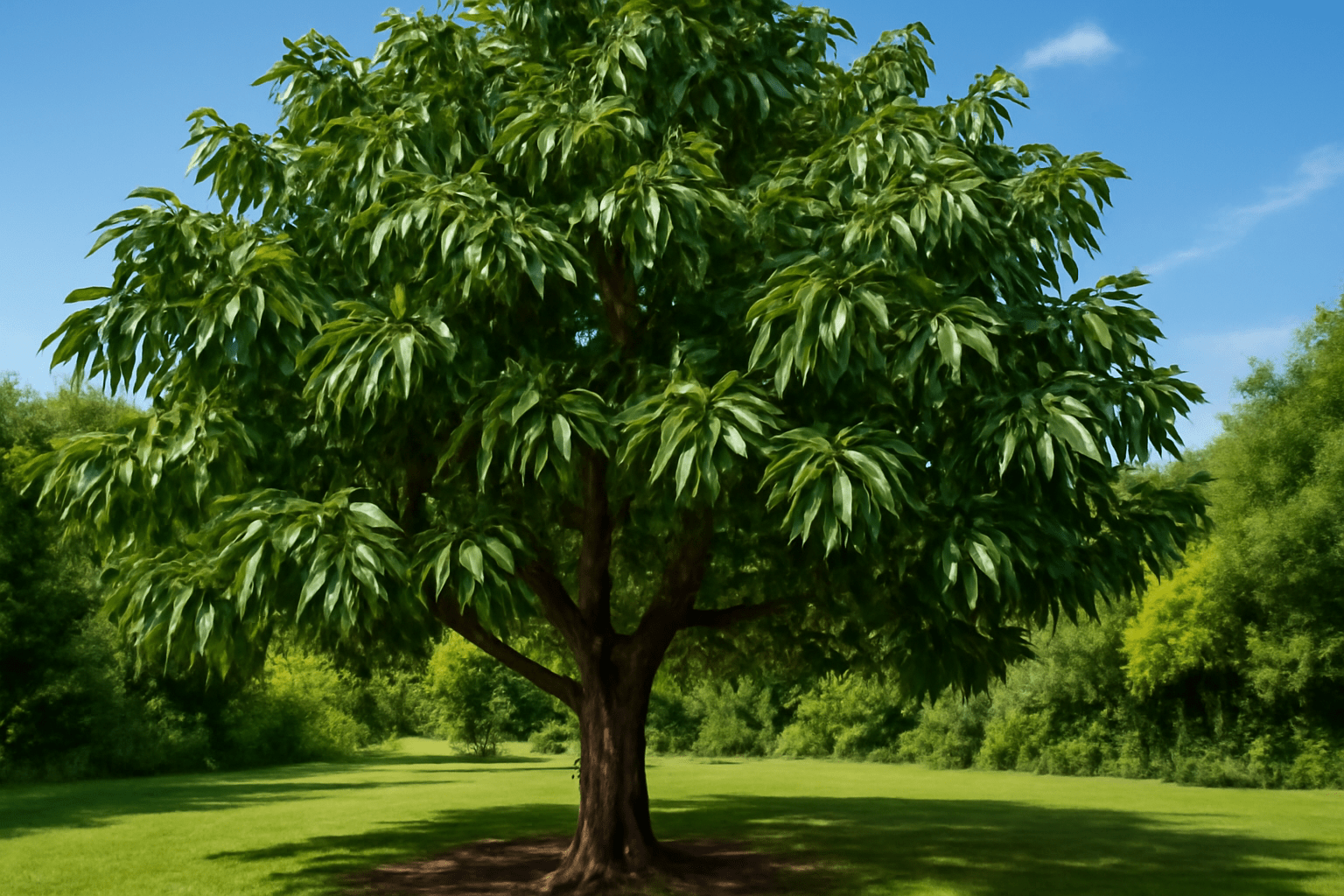
From proper watering and nutrient management to seasonal care and pest control, every action you take strengthens the foundation for a thriving, productive pecan tree. 🌰 By staying vigilant, adjusting your care as needed, and using the resources available to you, you can ensure your tree remains healthy, beautiful, and yields a bountiful harvest season after season. 🌿
Remember, healthy leaves are not only a sign of a happy tree—they’re the key to a successful growing experience. 🌱 So, take these tips to heart and apply them with confidence. 🌳 You’re on your way to becoming a pecan tree expert! 🌱😊
Happy gardening, and may your pecan tree flourish! 🌳🌰
🌳 Frequently Asked Questions (FAQs) 🌳
How do I know if my pecan nut tree leaves are healthy?
Healthy pecan leaves are dark green, smooth, and glossy. They should be full, with no yellowing, brown spots, or curling. Symmetrical, properly spaced leaflets also indicate a healthy tree, while any irregularities may signal a problem. 🌱
Why are my pecan nut tree leaves turning yellow?
Yellowing leaves can result from nutrient deficiencies, especially nitrogen or iron. Overwatering or poor soil drainage can also cause yellowing. To fix it, adjust watering practices and apply a balanced fertilizer to address nutrient imbalances. 🍃
What causes holes in my pecan tree leaves?
Holes in the leaves are usually caused by pests, such as caterpillars, aphids, or the pecan nut casebearer. Inspect your tree for pests, and treat it with insecticidal soap or neem oil to stop further damage. 🐛
How can I fix wilting or curled pecan tree leaves?
Wilting or curling leaves are often a sign of underwatering, heat stress, or pest damage. Ensure your tree is watered deeply, check for pests like aphids, and consider providing shade during extreme heat. 💧
What should I do if my pecan tree leaves are covered in brown spots?
Brown spots on leaves are often caused by fungal infections like leaf spot disease or powdery mildew. Prune infected leaves and apply a fungicide to prevent the spread of the disease. Make sure to water at the base of the tree to reduce moisture on the leaves. 🍂
How often should I water my pecan nut tree?
Water your pecan tree deeply once a week, especially during dry periods. The soil should be moist but not waterlogged. Adjust watering based on weather conditions and ensure proper drainage to avoid root rot. 🌧️
When is the best time to prune pecan trees?
The best time to prune your pecan tree is in late winter or early spring before new growth begins. Pruning during this time helps reduce stress on the tree and promotes healthy growth, ensuring strong leaves. ✂️
How do I protect my pecan tree from leaf diseases?
To protect your pecan tree from leaf diseases, maintain good air circulation by pruning crowded branches, avoid overhead watering, and remove fallen leaves promptly. Use fungicides if necessary, and apply them during the early stages of disease development. 🍃
